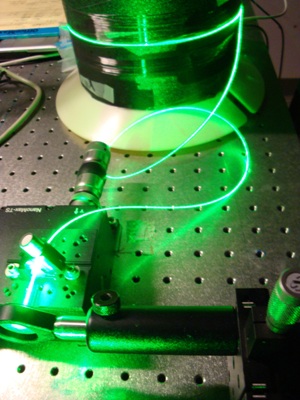Researchers at Clemson University are working on providing a solution for fiber optics using easily accessible, low-cost materials that can withstand the burden of greater light intensity and can be converted into a fiber.
 Clemson University researchers say sapphire is better for fiber optics than silica used now (credit: John Ballato, Clemson University)
Clemson University researchers say sapphire is better for fiber optics than silica used now (credit: John Ballato, Clemson University)
The researchers have described their findings in the journal, Nature Photonics. Silica has been utilized as the fiber material over the past several years. However, the silica material is not able to handle the increasing light intensity in fiber cable.
John Ballato, Director of the Clemson University’s Center for Optical Materials Science and Engineering Technologies, stated that at high power, the light forces the atoms of the material to undergo more violent vibrations by which some of the light energy is converted into sound energy. This limits the fiber’s ability to carry more power and thus reduces the amount of light that can pass through the fiber, which in turn restricts the power for high-energy laser applications and the quantity of data to be transmitted for telecommunication purposes.
Ballato and colleagues have discovered that sapphire has remarkable properties that make it suitable for high power lasers wherein the light intensity interplays with sound waves in the glass and results in reduced power-handling capabilities. Ballato informed that sapphire is acceptable and scalable, but its crystalline structure poses a problem to make optical fibers utilizing commercially accepted techniques.
In fact, Ballato created the sapphire fiber that can take the brunt of higher intensity and has greater efficacy for high-energy applications when compared to conventional commercial fibers.
According to Siddarth Ramachandran, Associate Professor in the electrical and computer engineering at Boston University, Ballato's recent findings with sapphire fibers are a significant advancement in the fiber optics field. Materials that are believed to be utilized only in the field of free-space optics are now being used in fiber geometries, which provide novel nonlinear optical effects and long interaction lengths.
Ballato stated that his team is conducting further analyses with sapphire and other materials, which demonstrate similar effects for fiber.